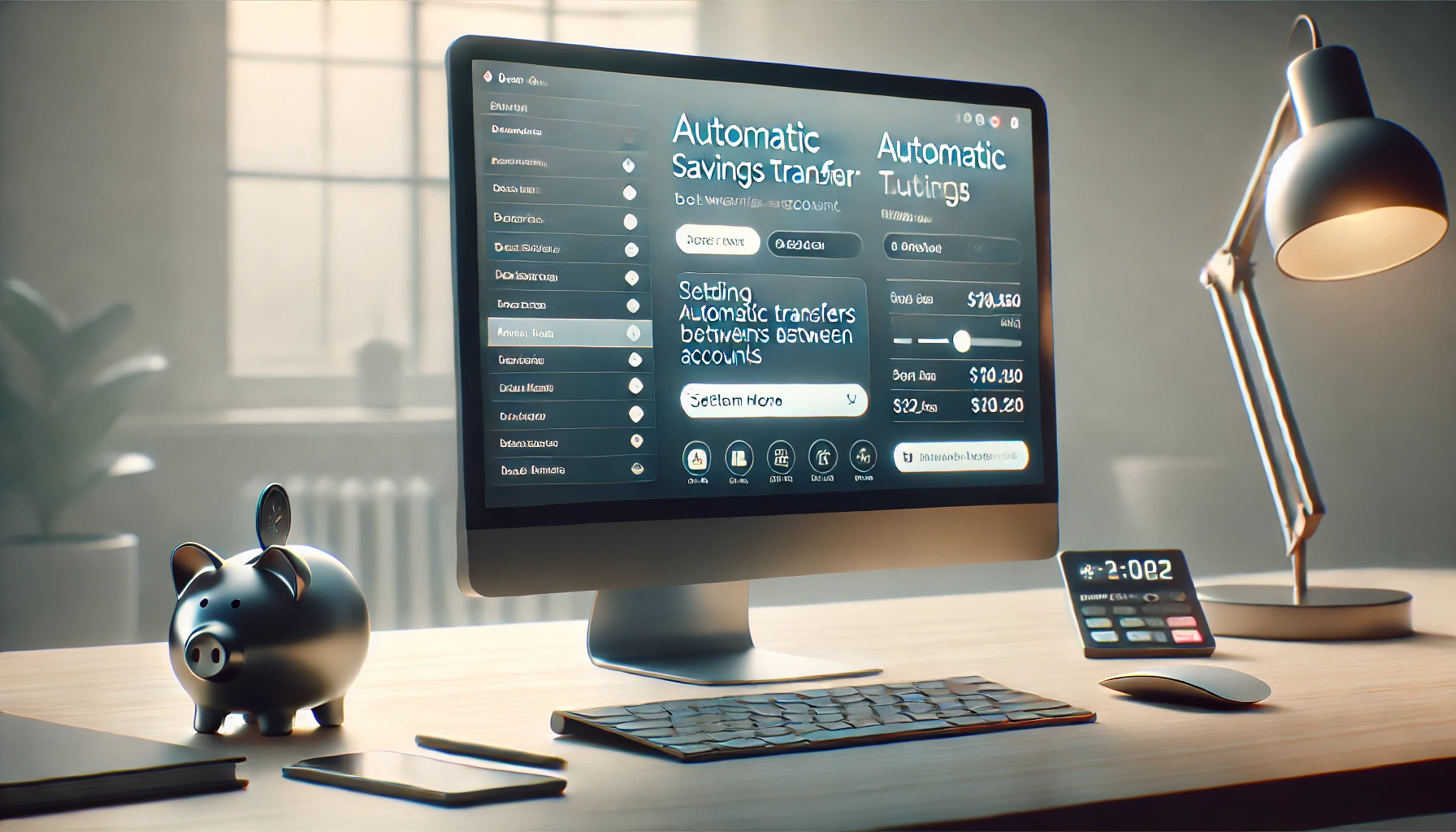10 Budgeting Tips to Save Money Fast
Struggling to save money and make ends meet? You’re not alone. In today’s world, managing finances can feel like a juggling act. But fear not! With a few savvy budgeting tips, you can start saving money fast and achieve your financial goals. Let’s dive into some practical and straightforward tips to help you keep more of your hard-earned cash.
What is Budgeting?
Budgeting is the process of creating a plan for how to spend your money, ensuring that you allocate funds to necessary expenses while saving for future goals. It’s a powerful tool for managing your finances effectively.
1. Track Your Spending
The first step in saving money is knowing where it’s going. Keep tabs on every penny you spend for a month. Use a spreadsheet or an app to categorize expenses. You might be shocked at how much those daily coffees add up!
- Track all expenses, big and small.
- Use budgeting apps like Mint or YNAB.
- Review your spending habits at the end of the month.
Why is tracking your spending so crucial? It’s simple: you can’t improve what you don’t measure. By tracking every transaction, you get a clear picture of where your money is going. This awareness is the first step toward making more informed financial decisions.
Consider this scenario: You’re trying to save money but find yourself short at the end of each month. You might not realize that those small, seemingly insignificant purchases—like a $5 coffee every day—add up to $150 a month. Once you see where your money is going, you can start making smarter choices.
To make tracking easier, consider using apps like Mint, You Need a Budget (YNAB), or even a simple spreadsheet. These tools can automatically categorize your expenses, helping you see patterns and identify areas where you can cut back.

2. Set Clear Financial Goals
Without clear goals, budgeting is like trying to drive without a destination. Whether it’s saving for a house, a vacation, or just building an emergency fund, having a target makes it easier to stay on track.
- Define short-term and long-term financial goals.
- Assign deadlines to your goals.
- Review and adjust your goals regularly.
Setting financial goals gives you a roadmap to follow. It’s much easier to stay disciplined with your spending when you know what you’re working toward. Start by identifying what’s important to you—do you want to pay off debt, build an emergency fund, or save for a down payment on a house? Once you have your goals, break them down into actionable steps.
For example, if your goal is to save $10,000 for a down payment in two years, you’d need to save about $417 per month. Knowing this, you can adjust your budget accordingly to make sure you’re on track to meet your goal.
“Setting goals is the first step in turning the invisible into the visible.” – Tony Robbins
Review your goals regularly and make adjustments as needed. Life changes, and so should your financial plan. If you get a raise, consider putting more money toward your goals. If you face unexpected expenses, you might need to adjust your timeline.
How to Set Realistic Financial Goals
Start by assessing your current financial situation. Be realistic about what you can achieve based on your income and expenses. Break down larger goals into smaller, manageable steps.
3. Create a Monthly Budget
Once you know your spending habits and have set your goals, it’s time to create a budget. Allocate your income to different categories like rent, groceries, savings, and entertainment. Stick to your budget as closely as possible, and review it monthly.
- Start with your monthly income.
- Deduct fixed expenses like rent and utilities.
- Allocate money to savings and other essential categories.
- Keep some funds for discretionary spending.
Creating a budget is like giving your money a job. Every dollar you earn should have a purpose, whether it’s paying bills, saving for the future, or having a little fun. When you know exactly where your money is going, you can avoid overspending and start building savings.
There are several budgeting methods you can use, but one of the most popular is the 50/30/20 rule. This method suggests allocating 50% of your income to needs (like housing and food), 30% to wants (like dining out and entertainment), and 20% to savings and debt repayment.
This simple structure helps you cover your essentials while still allowing room for some discretionary spending and, most importantly, savings. The key is to stick to these percentages and adjust as needed based on your goals and financial situation.
Budgeting Methods to Consider
Aside from the 50/30/20 rule, other budgeting methods might suit your lifestyle better:
- Zero-Based Budgeting: Every dollar you earn is assigned a purpose, with nothing left unallocated.
- Envelope System: Allocate cash to different spending categories, and when the cash is gone, no more spending in that category.
- Pay-Yourself-First Budgeting: Prioritize saving and investing before any other expenses.

4. Cut Unnecessary Expenses
Look for areas where you can cut back. Do you really need that gym membership if you hardly go? Or maybe it’s time to unsubscribe from those streaming services you rarely use. Cutting out just a few non-essential items can free up more money for savings.
“Do not save what is left after spending, but spend what is left after saving.” – Warren Buffett
We all have those little luxuries that we enjoy, but if they’re not adding value to your life, they might be worth cutting out. Start by listing out all your non-essential expenses. This could include dining out, entertainment, subscription services, and other discretionary spending.
Once you have your list, go through each item and ask yourself if it’s worth keeping. For instance, do you really need a premium cable package when you only watch a few channels? Could you cook more meals at home instead of eating out? Even small changes can add up to significant savings over time.
Quick Tips to Trim Your Budget
- Cook at home instead of eating out.
- Shop with a list to avoid impulse buys.
- Cancel unused subscriptions.
- Take advantage of free or low-cost entertainment options.
- Consider carpooling or using public transportation to save on gas.
Remember, cutting expenses doesn’t mean depriving yourself. It’s about making conscious choices to prioritize what’s truly important. You can still enjoy life while being mindful of your spending.

5. Automate Your Savings
Make saving money a no-brainer by automating it. Set up automatic transfers to your savings account every payday. This way, you’ll never forget to save, and you won’t be tempted to spend that money.
One of the best ways to ensure you save money consistently is to automate the process. By setting up automatic transfers, you remove the temptation to spend your extra cash. Out of sight, out of mind—and into your savings account.
Most banks allow you to set up automatic transfers from your checking account to your savings account. You can even open a separate savings account specifically for your goals, such as an emergency fund or a vacation fund. This way, you can track your progress more easily.
“A penny saved is a penny earned.” – Benjamin Franklin
If you’re struggling to save, start small. Even transferring $50 a month can add up over time. As you get more comfortable with your budget and find ways to cut back on expenses, you can increase your savings contributions.

6. Use the 50/30/20 Rule
The 50/30/20 rule is a simple and effective budgeting technique. Allocate 50% of your income to needs, 30% to wants, and 20% to savings and debt repayment. This balance ensures you cover essentials while still enjoying life and saving for the future.
- 50%: Needs (housing, utilities, groceries).
- 30%: Wants (dining out, entertainment).
- 20%: Savings and debt repayment.
Why does the 50/30/20 rule work so well? It’s flexible, easy to understand, and helps you balance your spending across essential needs, discretionary spending, and savings. This balance is crucial for long-term financial health.
The 50% allocated to needs includes your essential expenses: rent or mortgage, utilities, groceries, transportation, insurance, and other necessities. The 30% allocated to wants covers discretionary spending, like dining out, entertainment, hobbies, and non-essential shopping. The final 20% goes toward savings, investments, and debt repayment.
Adapting the 50/30/20 Rule to Your Lifestyle
While the 50/30/20 rule is a great starting point, it’s not set in stone. You can adjust the percentages to fit your financial situation. For instance, if you have significant debt, you might allocate 30% to debt repayment and reduce your discretionary spending.
On the other hand, if you’re debt-free and focused on growing your savings, you might increase your savings allocation to 25% or 30%. The key is to find a balance that works for you while still ensuring you’re meeting your financial goals.
7. Review and Adjust Your Budget Regularly
Your financial situation isn’t static, and your budget shouldn’t be either. Life changes, so should your budget. Review your budget regularly and adjust it as necessary to reflect changes in income, expenses, or goals.
Budgeting is not a one-and-done task. Your financial situation will evolve over time, and your budget should reflect these changes. Regularly reviewing your budget helps you stay on track and make necessary adjustments.
For example, if you get a raise at work, you might want to allocate more money to savings or investments. On the flip side, if you face unexpected expenses, like car repairs or medical bills, you’ll need to adjust your budget to accommodate those costs.
When to Review Your Budget
At least once a month, sit down and look at your budget. Are you sticking to it? Have there been any unexpected expenses? Adjust your budget accordingly.
- Review your budget at the end of each month to see how you did.
- Make adjustments based on changes in income or expenses.
- Reevaluate your financial goals periodically to ensure they’re still relevant.
In addition to monthly reviews, consider doing a more in-depth review every quarter. This can help you spot trends and make bigger adjustments to your budget as needed. For example, if you notice that your grocery bill has been creeping up, you might want to look for ways to cut back on food costs.
8. Avoid Debt and Pay Off Existing Debt
Debt can be a significant barrier to saving money. Avoid taking on new debt whenever possible. If you have existing debt, prioritize paying it off, starting with the highest interest rate first.
Debt can feel like a heavy burden, but it’s important to tackle it head-on. The longer you carry debt, the more interest you’ll pay, and the harder it will be to save money. That’s why paying off debt should be a top priority in your budgeting plan.
Start by listing all of your debts, including credit cards, student loans, car loans, and any other outstanding balances. Then, focus on paying off the debt with the highest interest rate first. This is known as the debt avalanche method and can save you the most money in interest payments over time.
“A budget is telling your money where to go instead of wondering where it went.” – Dave Ramsey
Strategies for Paying Off Debt
- Debt Avalanche: Focus on paying off the highest interest debt first while making minimum payments on other debts.
- Debt Snowball: Focus on paying off the smallest debt first to gain momentum, then move on to the next smallest debt.
- Balance Transfers: Consider transferring high-interest debt to a lower-interest credit card to reduce interest payments.
- Debt Consolidation: Combine multiple debts into a single loan with a lower interest rate for easier management.
Whichever method you choose, the key is to stay consistent and avoid taking on new debt. Focus on making more than the minimum payment whenever possible, as this will help you pay off your debt faster and save money on interest.
9. Use Cash for Discretionary Spending
It’s easy to overspend when you’re swiping a card. Using cash for non-essential purchases can help you stay within your budget. When the cash is gone, it’s time to stop spending.
There’s something about handing over physical cash that makes you more mindful of your spending. When you use cash for discretionary expenses, like dining out or shopping, you’re more likely to stick to your budget because you can physically see how much money you have left.
Benefits of Using Cash
Using cash can make you more mindful of your spending. It also eliminates the risk of accumulating credit card debt on impulse buys.
- Helps you stay within your budget by limiting discretionary spending.
- Reduces the temptation to overspend, as you can physically see how much money you have left.
- Eliminates the risk of accumulating credit card debt on non-essential purchases.
To get started, withdraw a set amount of cash each week for discretionary spending. Once that cash is gone, you’ll need to wait until the next week to spend more. This simple technique can help you stay on track with your budget and avoid overspending.
10. Take Advantage of Discounts and Coupons
Before making a purchase, always check for discounts and coupons. A little effort can save you a lot over time. Sign up for newsletters, use cashback apps, and always look for promo codes before hitting “buy.”
One of the easiest ways to save money is to take advantage of discounts, coupons, and cashback offers. Whether you’re shopping online or in-store, there are often deals and promotions that can help you save on your purchases.
- Sign up for loyalty programs to earn rewards and receive special offers.
- Use cashback apps like Rakuten or Honey to earn money back on your purchases.
- Check for promo codes before making online purchases.
- Look for sales and clearance items before paying full price.
Another tip is to compare prices before making a purchase. With so many online retailers, it’s easy to find the best deal. Simply search for the product you’re interested in and compare prices across different websites. You can also use price comparison tools to make the process even easier.
How to Maximize Savings with Coupons
Using coupons is a great way to save money on everyday purchases. Here are some tips for getting the most out of your coupons:
- Stack Coupons: Use manufacturer coupons and store coupons together for maximum savings.
- Shop During Sales: Use coupons on sale items to save even more.
- Join Couponing Communities: Join online forums or social media groups to find and share the latest coupons.
By making couponing a habit, you can significantly reduce your grocery bill and save money on household essentials. Just be sure to use coupons for items you would buy anyway, and avoid the temptation to purchase unnecessary items just because you have a coupon.

Conclusion: Start Saving Money Today!
Saving money doesn’t have to be complicated. By following these 10 budgeting tips, you can take control of your finances and start saving money fast. Remember, the key to successful budgeting is consistency. Stay focused on your goals, review your progress regularly, and make adjustments as needed.
If you’re ready to take the next step in your financial journey, why not start by reviewing your budget today? You’ll be amazed at how small changes can lead to big savings!
